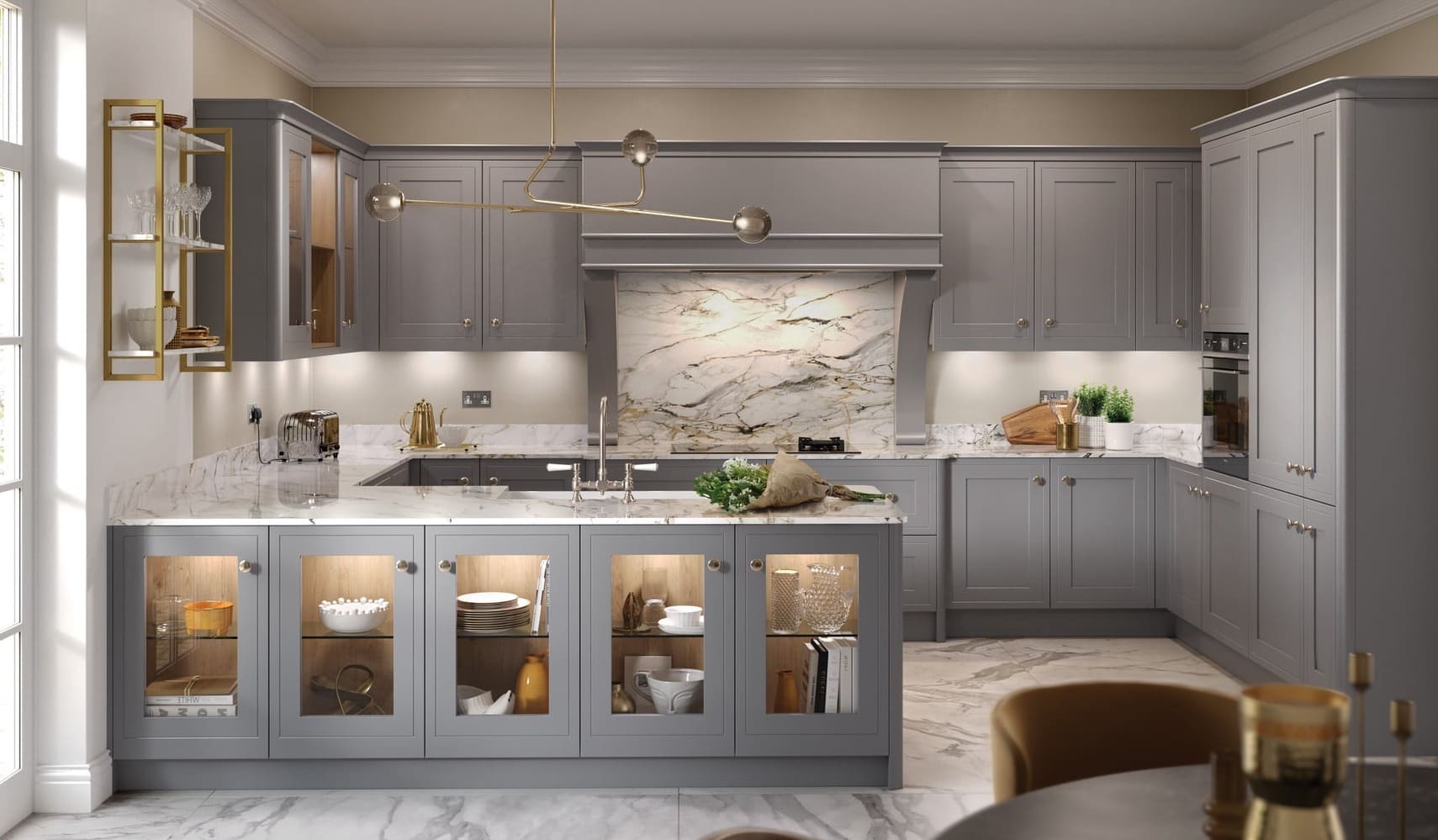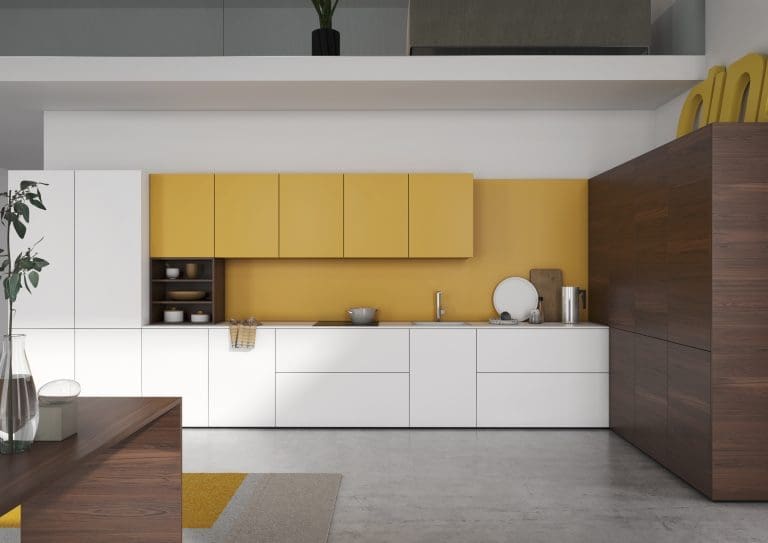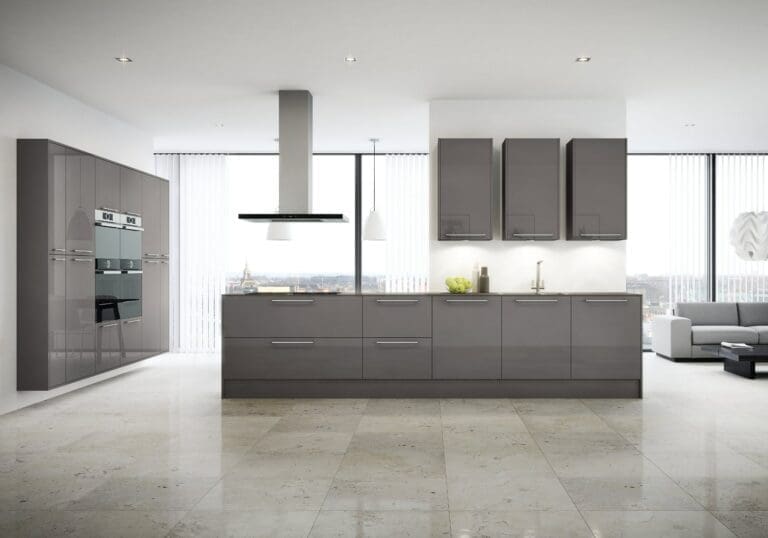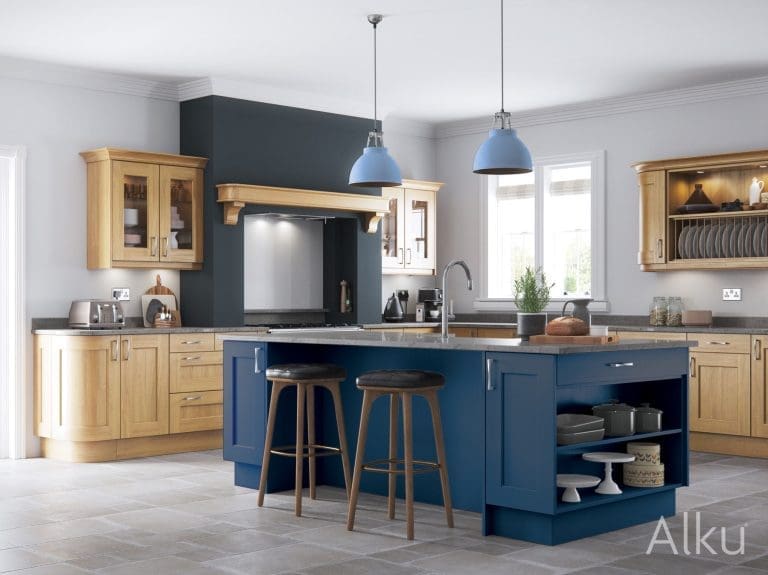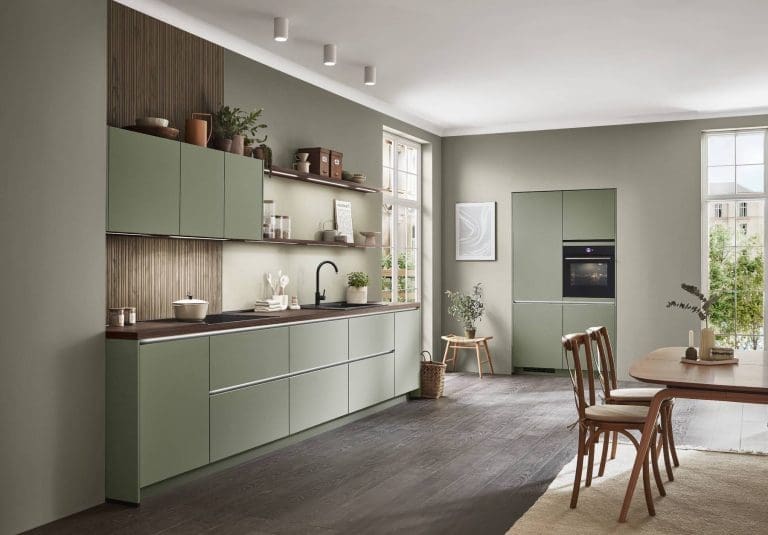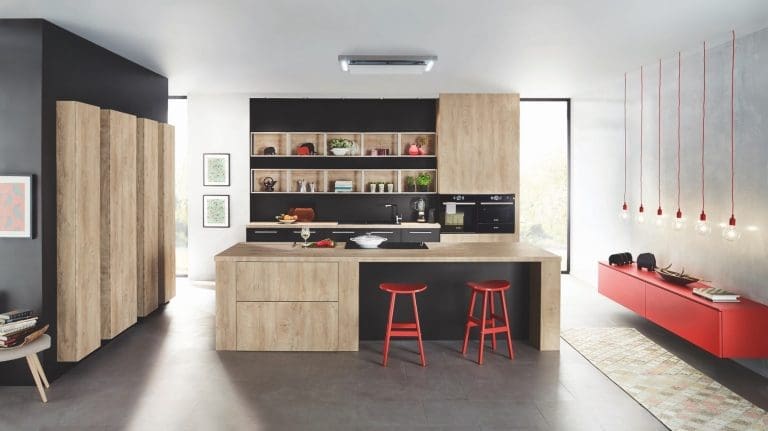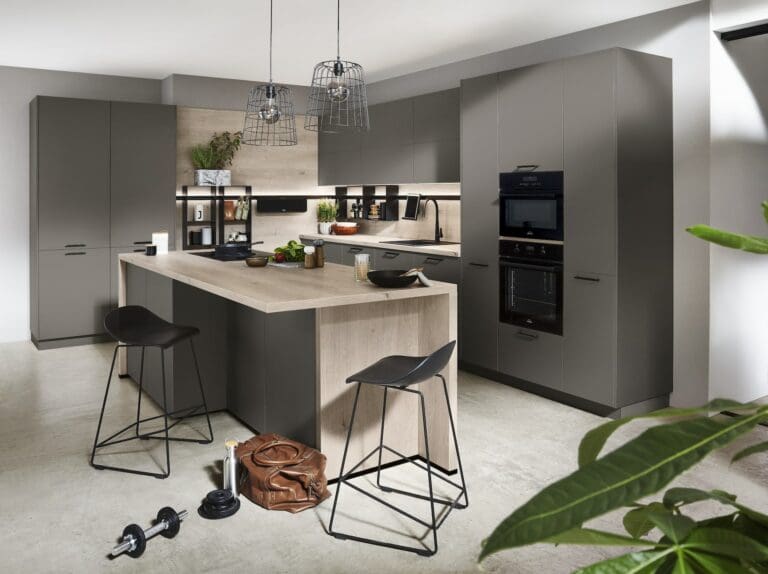Budget Versus Luxury Kitchens: Where Does the Real Value Lie?
When planning a new kitchen, the question is rarely “What do I want?” and more often “What can I justify spending?” The tug-of-war between aspiration and budget is one most homeowners know well. But when comparing budget versus luxury kitchens, where does the real value lie? Does a higher price always mean better quality, or are you simply paying for a brand name?
In truth, the answer is rarely black and white. Let’s take a closer look at what you really get for your money – and why a well-designed kitchen will typically offer more value than you’d expect.
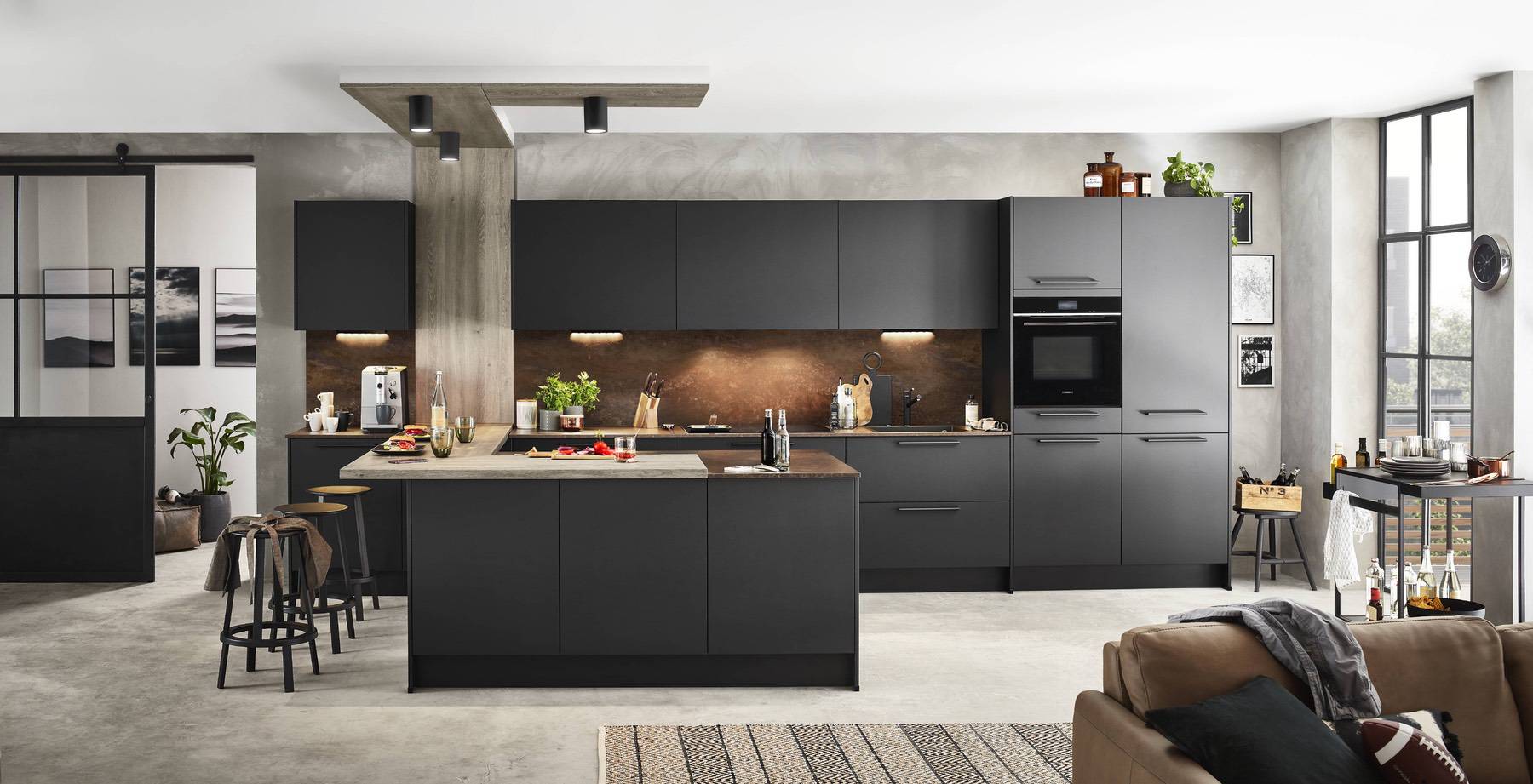
What Counts as a Budget Kitchen?
Budget kitchens vary dramatically depending on the supplier. Some are flat-pack units from DIY stores, others are basic rigid units with limited choice in colours or finishes. These kitchens tend to focus on functional value: you’ll get the basics – cupboards, handles, worktops, and an appliance or two. But design flexibility, storage innovations, and premium finishes are often sacrificed to keep costs down.
The average spent on a budget kitchen in the UK can be as low as £3,000–£7,000. On the surface, it might seem like a sensible choice – especially if you’re renovating a rental property or simply need something to tide you over. But the long-term reality can be very different.

The Hidden Costs of a ‘Cheap’ Kitchen
A budget kitchen might save you money today, but it can also cost you more over time. Cheaper materials – such as thin cabinet boards, low-grade laminates, and basic hinges – tend to show wear quickly. Doors may sag. Drawers may break. Chipboard may swell if moisture gets in. Before long, you might find yourself replacing components or redoing the entire kitchen.
More importantly, budget kitchens often offer poor use of space. That might not seem like a big deal – until you’ve lived with awkward corners, limited storage, and clunky door swings.
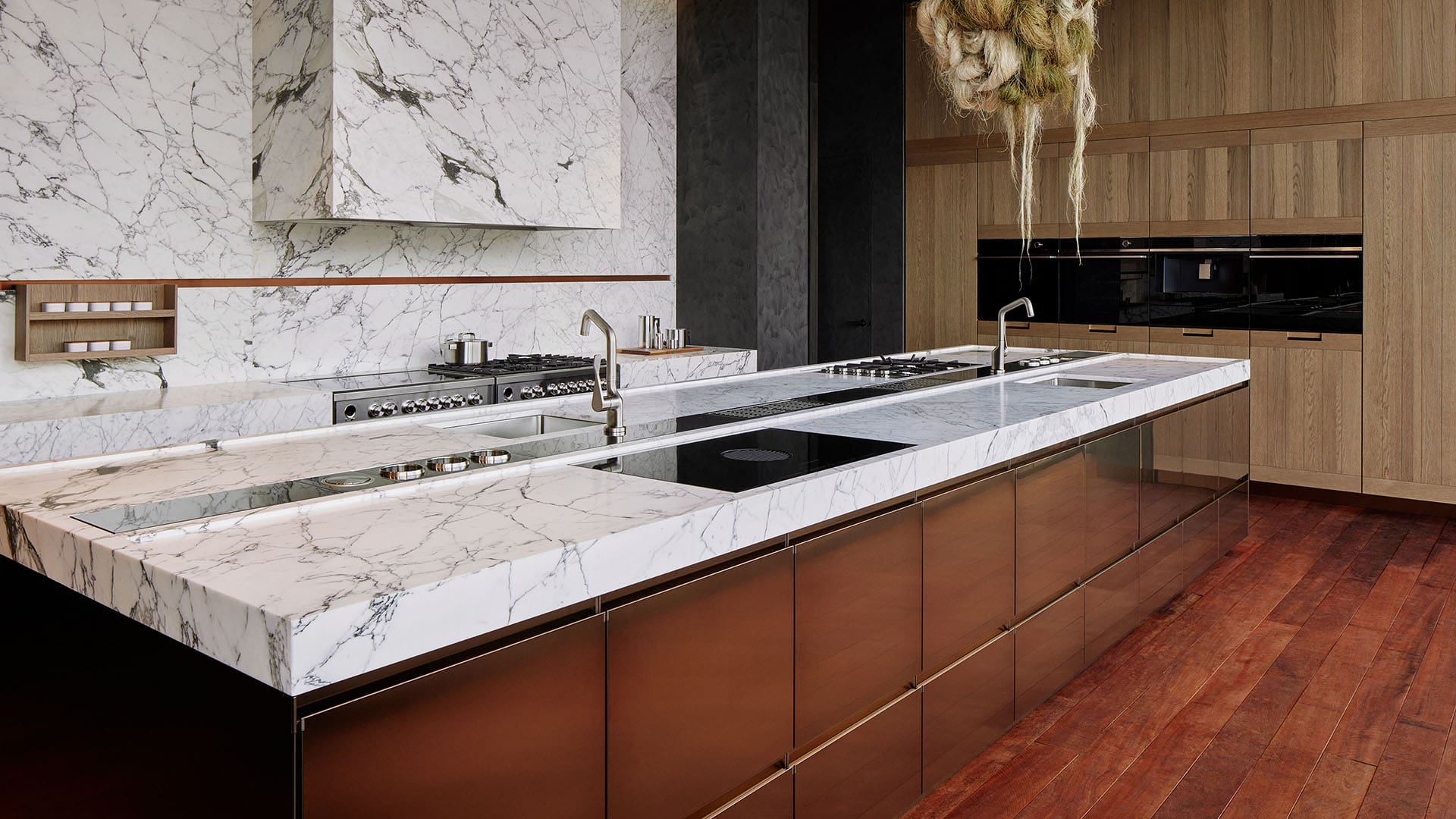
So, What Makes a Luxury Kitchen?
Luxury kitchens don’t just look better – they work better. German kitchen brands like Nobilia, Ballerina, Brigitte, and Bauformat offer design-led kitchens that are built to last, engineered with precision, and tailored to the way people live.
Within a luxury kitchen, you’ll typically find:
- Soft-close drawers with full-extension runners
- Anti-fingerprint matt finishes
- Clever internal storage like pull-out larders, corner carousels, and hidden bins
- Durable worktops in quartz, ceramic, or compact laminate
- Flexible sizing to make the most of your room
- Seamless handleless styles and customisable colour palettes
German kitchens in particular are known for their balance of engineering, efficiency, and elegance. Even entry-level models from manufacturers like Nobilia or Bauformat Burger offer a level of refinement that’s hard to match in cheaper alternatives.
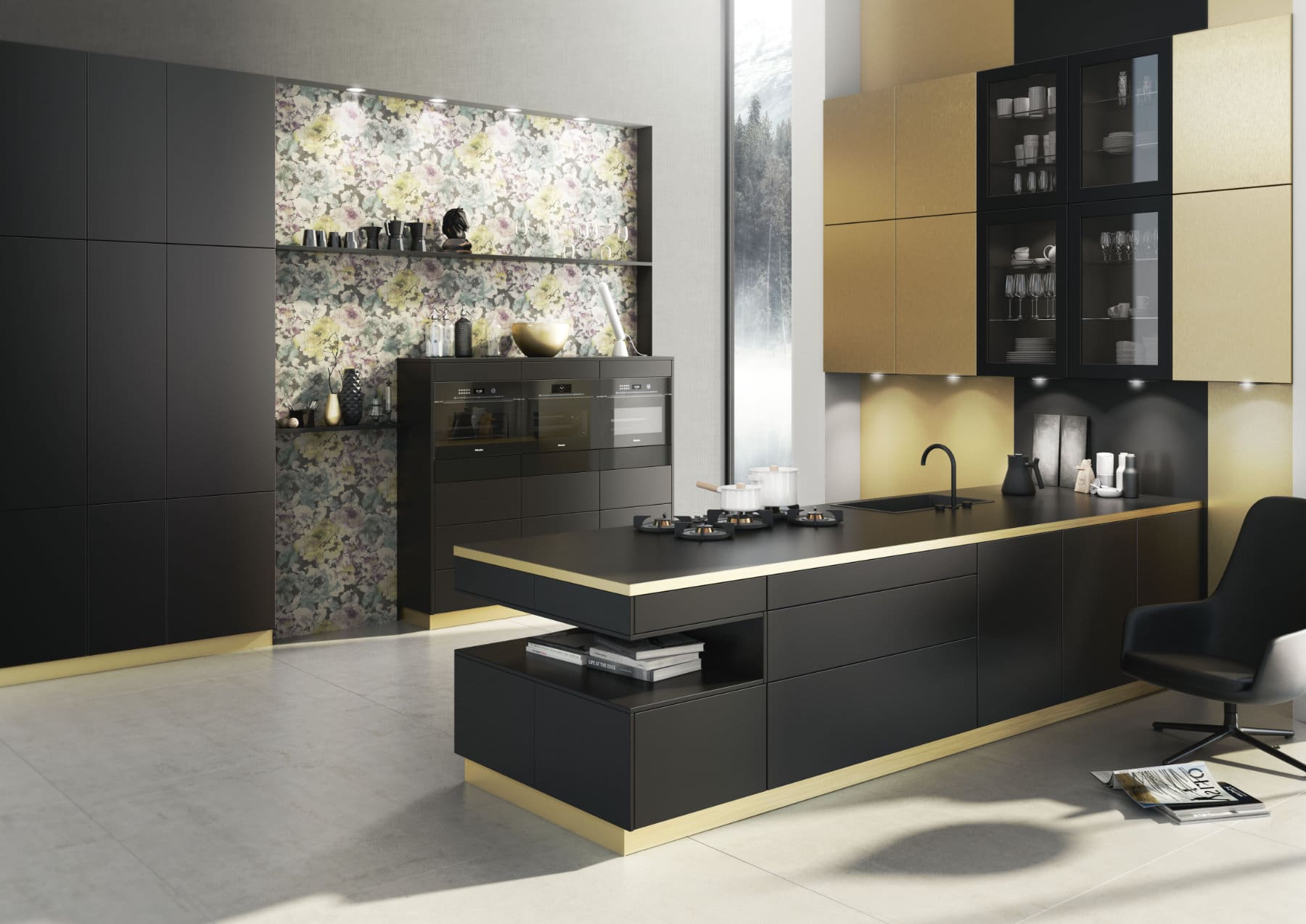
Budget Versus Luxury Kitchens: Design & Functionality
The biggest difference between budget and luxury kitchens lies in the design process. Budget ranges tend to offer a limited selection: a handful of colours, two or three styles, and standard unit sizes. There’s little room to adapt the design to suit your space.
Alternatively, luxury kitchen brands take a more considered approach. Their products are designed to be flexible – not just aesthetically, but practically. This means you can integrate a kitchen island, improve your lighting, add smart appliances, or build in a pantry unit – all without compromising on flow or function.
Take the popular kitchen brands Brigitte or Ballerina, for example. These brands offer compact and full-height larder solutions, anti-slip drawer inserts, glass-sided pull-outs, and sleek handleless profiles – allowing you to create a kitchen that works around you.
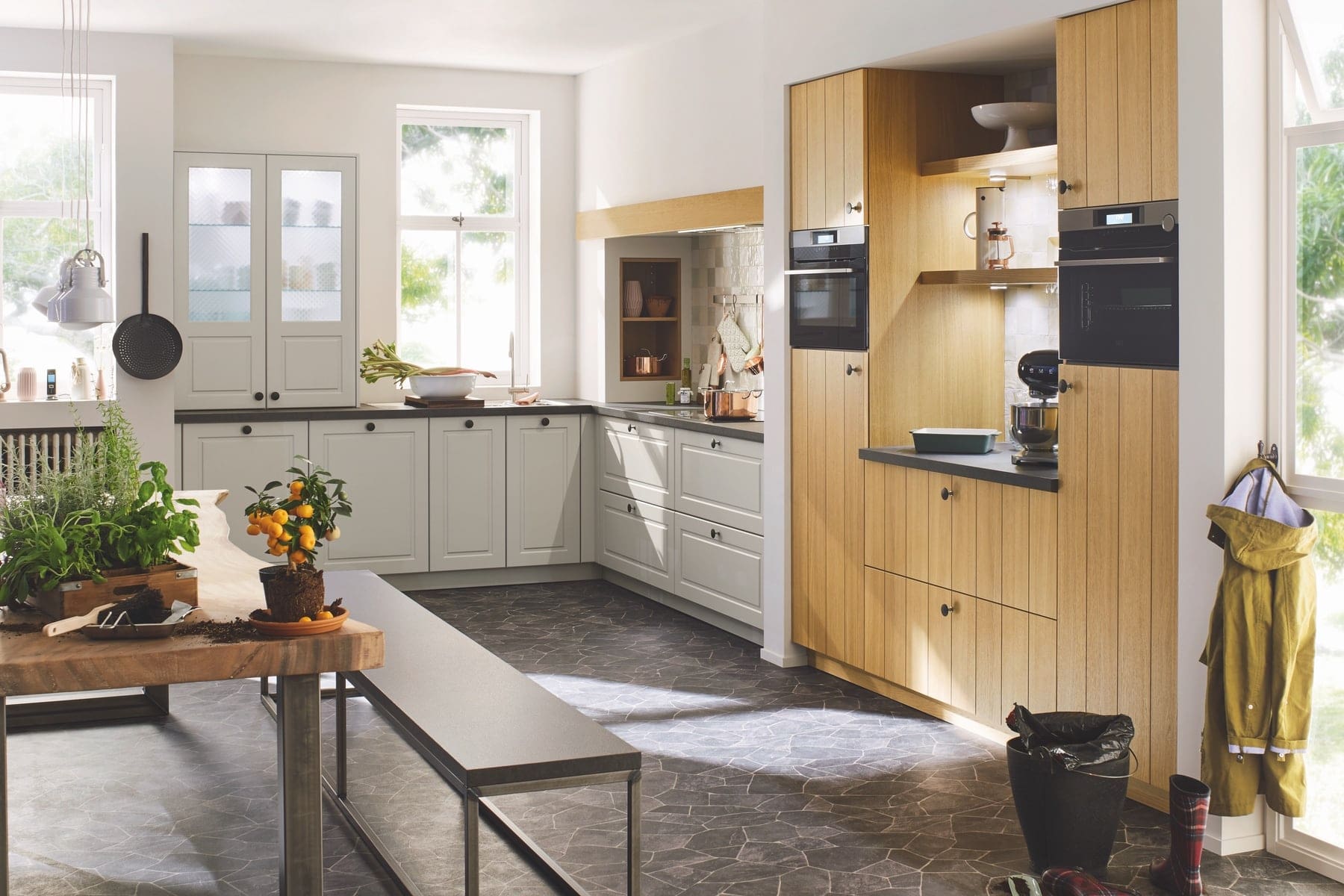
How Long Should a Kitchen Last?
A good kitchen should last 15–25 years. But not all kitchens will. In budget options, wear and tear tends to set in within 5–10 years, particularly where cheaper hinges, worktops, and fittings are involved. But luxury kitchens are designed with longevity in mind. Leading German kitchen brands use high-pressure laminates, moisture-resistant carcasses, and advanced edging technology to help kitchens stand up to heat, steam, and spills. A brand like Alku or Ashley Ann, for example, offers British-built quality and craftsmanship with a similar focus on durability and design.
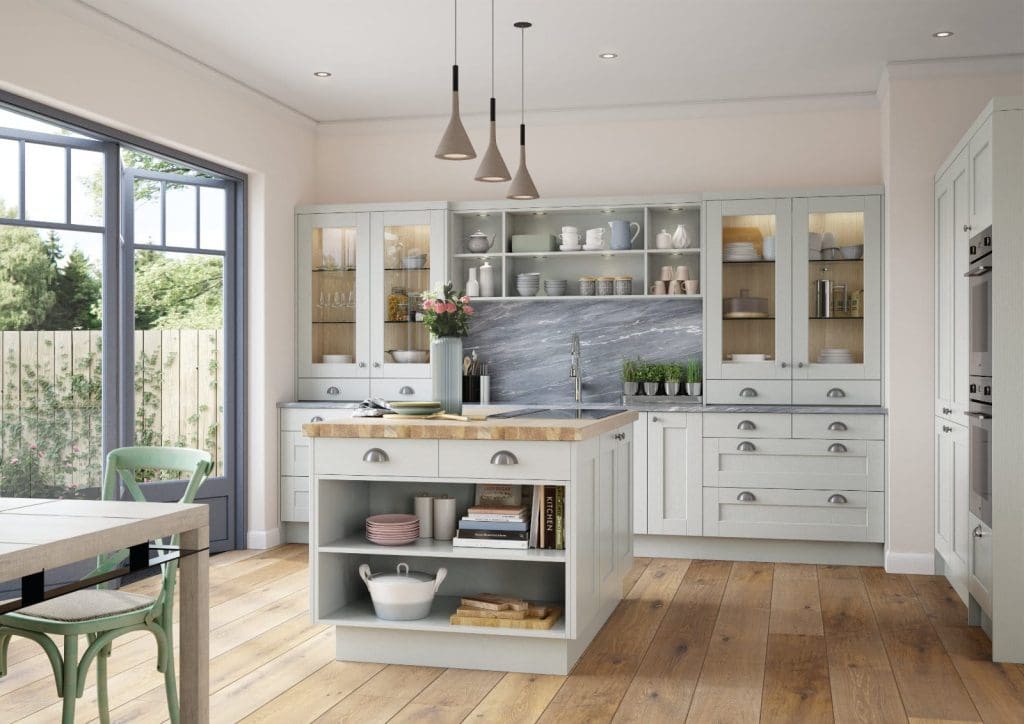
Sustainability: Budget vs. Luxury Kitchens
There’s also the question of sustainability. Cheap kitchens are often replaced more frequently, creating waste that ends up in landfills. Many luxury kitchen manufacturers take a much more considered approach.
Nobilia, for instance, is carbon-neutral, FSC-certified, and focuses on recyclable materials and sustainable forestry. Bauformat and Brigitte kitchens use environmentally friendly production processes and energy-efficient manufacturing methods. A luxury kitchen, when chosen well, can be the more sustainable option – not only because it lasts longer, but because of how it’s made.
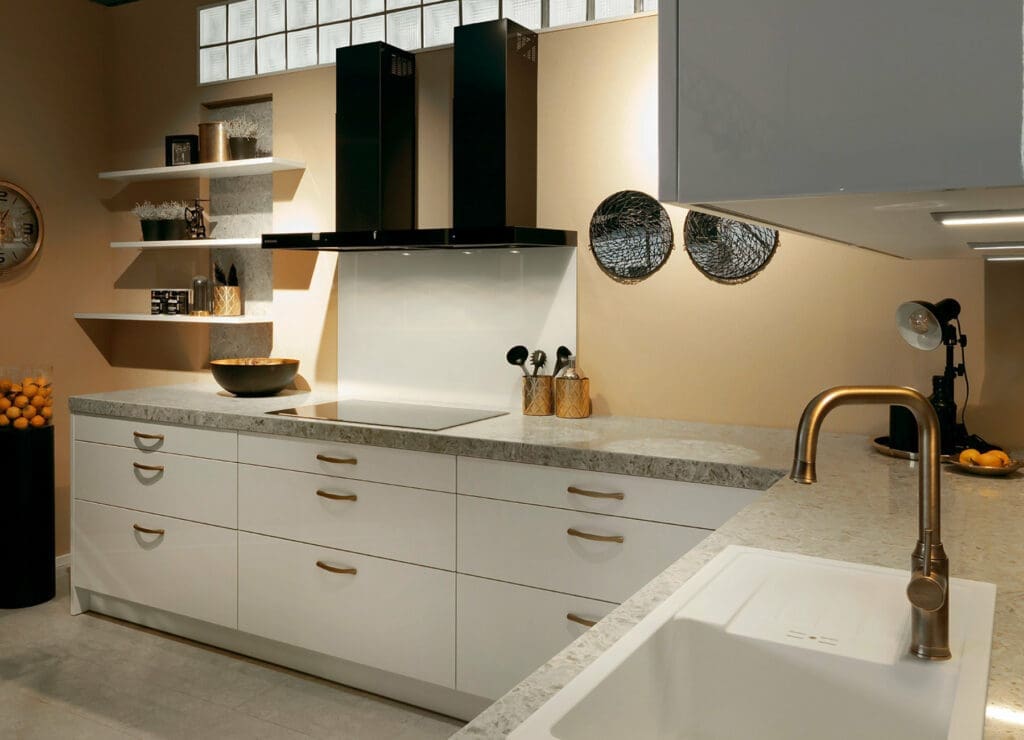
Is Luxury Always More Expensive?
Not necessarily. The term “luxury” can be misleading. With some high-end suppliers, you’re paying a premium for a name. But with others – particularly German or British manufacturers who focus on quality over marketing – the value equation looks different.
A luxury kitchen from a trusted independent kitchen supplier may not be as costly as you think. In fact, many offer full kitchens from £10,000–£20,000, depending on size, layout, and appliances – a figure not too far from some mid-range high street retailers once installation, worktops, and fittings are added to your quote.
And crucially, you get the expertise of a professional kitchen designer to ensure that every pound is well spent.
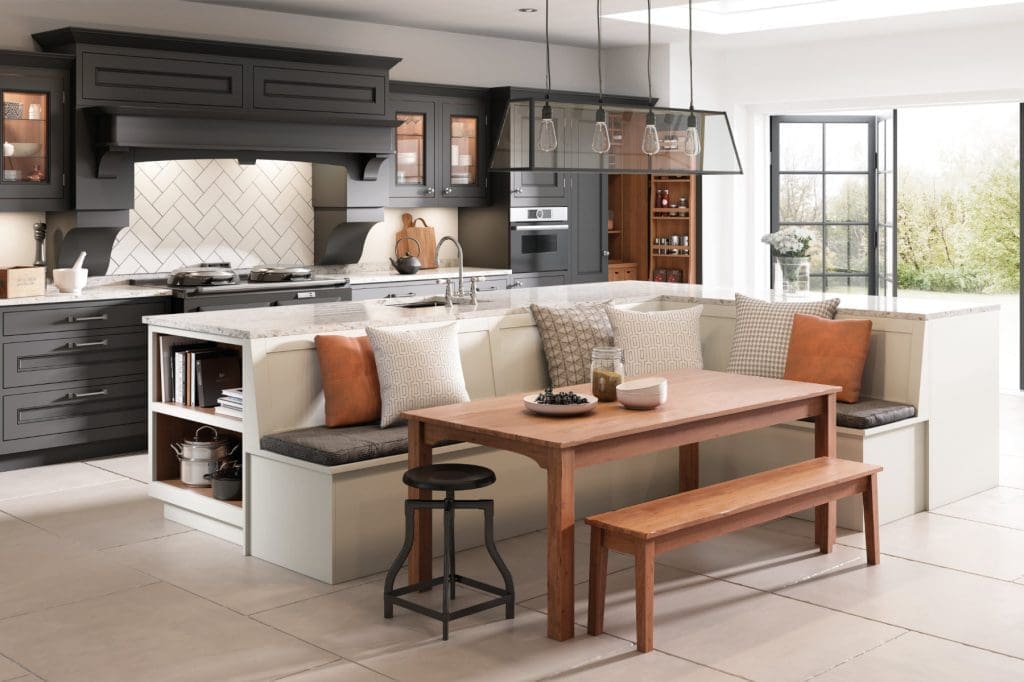
So… Where Does the Real Value Lie?
It comes down to how you define value.
If you’re renovating to sell or letting a property, a budget kitchen may be enough. But if this is your forever kitchen – or even your 10-year kitchen – value means more than just price. It means:
- Better materials that stand the test of time
- Smarter storage that makes daily life easier
- Personalised layouts that suit your lifestyle
- Finishes that continue to look good for years
Independent kitchen retailers specialising in German brands like Nobilia, Ballerina, Bauformat, and Brigitte, or quality British brands like Alku, Ashley Ann, and JJO, are often best placed to help you find the balance between cost and quality.
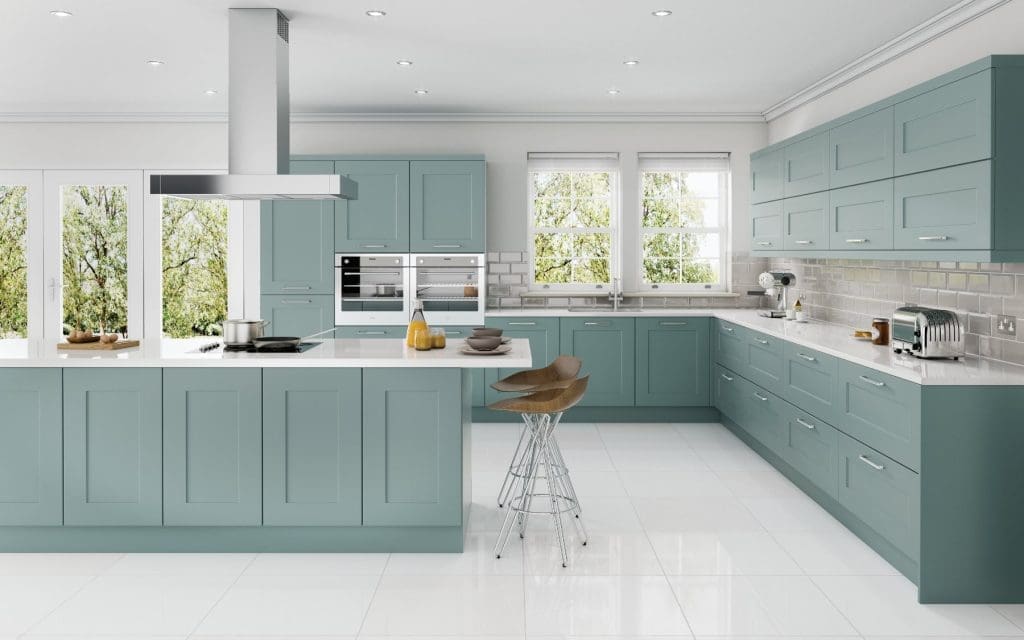
Final Thoughts: Don’t Just Compare Prices – Compare Experience
When weighing up budget versus luxury kitchens, it’s worth looking beyond the catalogues and price lists. Ask yourself:
- Who is designing your kitchen?
- What guarantees are in place?
- Can you visit a showroom to see the quality for yourself?
- What are you compromising on to save money?
A professional kitchen designer can guide you through these questions – showing you how to create a kitchen that’s built around your needs, not just your budget.
At My Kitchen Specialist, we work with trusted, reputable partners across the kitchen sector. From bespoke cabinetry and stylish accessories to premium appliances, we collaborate exclusively with leading manufacturers whose high standards align with our own.
If you’re still unsure whether a luxury kitchen is within reach, visit a local independent kitchen showroom and see what’s possible. You might be surprised at the real value waiting there.
